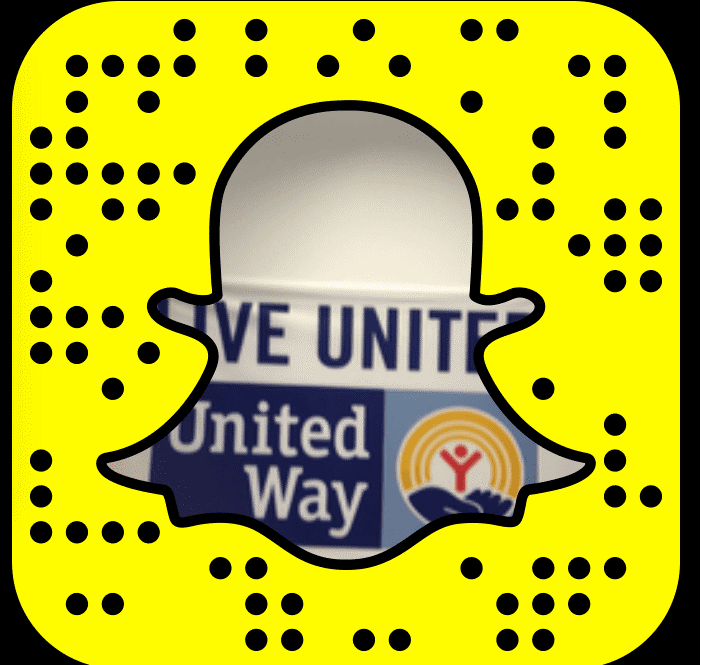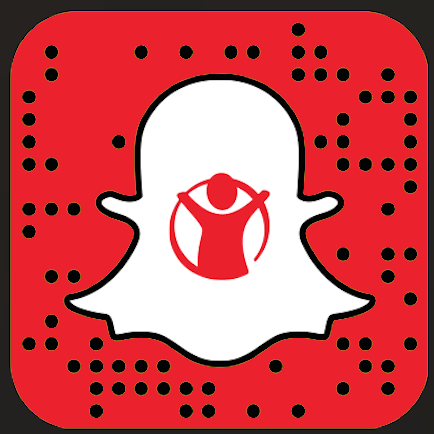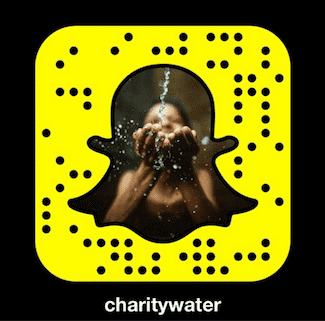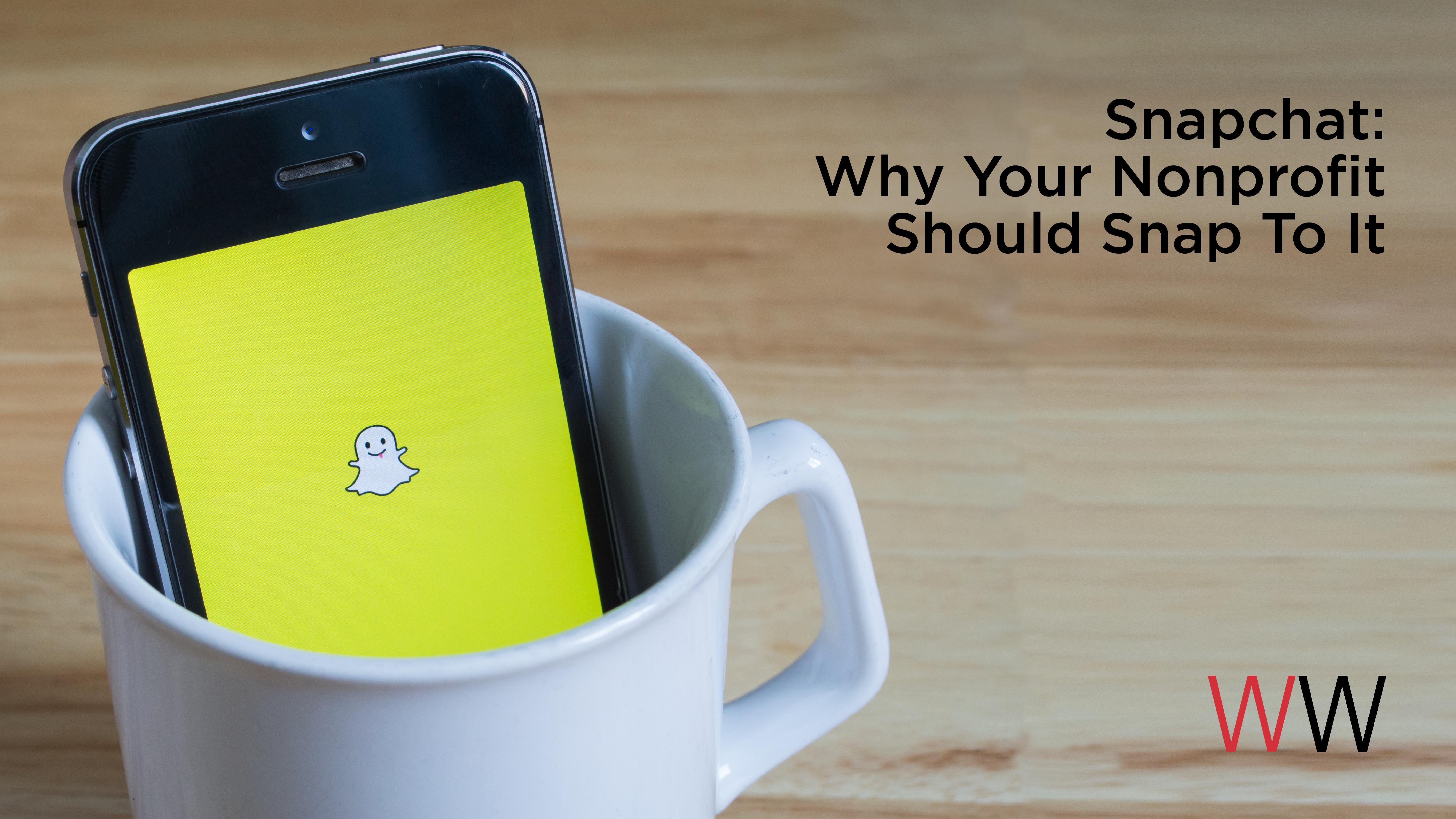By: Glaelis Sierra – Account Director at Williams Whittle
Snapchat is a popular photo-sharing and messaging app that allows users to share “Snaps” and “Stories”. A Snap is a quick photo you can take with the app that gets sent via messaging to friends, but then deletes itself after 10 seconds. When it comes to Snaps, you can still keep the ones you like before they disappear forever by saving them to your Memories tab – that way, anyone can view your curated collection of individual Snaps.
Stories are mini video collections of your Snaps that you can put together which only last for 24 hours. Stories don’t have to be sent directly to your friends – instead, they can be visible for everyone to watch.
The “stories” feature was so popular in Snapchat that now, most social platforms have copied this capability. Instagram introduced stories in 2016 and Facebook followed by introducing them in 2017.
Snapchat users can choose filters, stickers, funky lenses, geo-filters and more. What’s even a cooler feature is that you can create filters yourself.
Here are 5 facts about Snapchat that you should know –
- As of Q4 2020, there are 265 million daily active Snapchat users worldwide.
- Nearly six in ten, or 59%, of all U.S. internet users aged 13 to 24 years use Snapchat. It is the most popular social network among teens.
- Over 210 million snaps are created every day.
- There were over 300 million downloads of the app in 2020.
- The average daily active user on Snapchat opens the app’s camera more than 20 times per day.
Why should your nonprofit organization use Snapchat?
- Reaching a new audience. Snapchat is particularly popular with the younger generation. Your nonprofit can benefit from the “My Story” function to increase outreach and reach a potential new audience.
- Connecting with supporters in a new way. The intimate and visual nature of the app might give your organization the freedom to experiment with more compelling content. Given the short lifespan of your content, the risk of failure is low. Use Snapchat to show what your organization is really about, what you do and how you do it. Or take a moment to be silly and show your nonprofit’s sense of humor.
- Capturing users’ attention. Because content disappears in a short period, Snapchat users tend to pay more attention than the average viewer. People also can’t tell what snaps are about until they open them, so you might be more likely to reach some audience members through a snap than an email.
How do you get started on Snapchat?
Simply start by downloading the app and signing up to claim your username. To access certain features of the app, you’ll need to enable filters and turn on location services.
Then, you’ll create a custom “snapcode” for your organization. This will allow your supporters to add your nonprofit as a Snapchat friend by taking a screenshot of your code and following a few steps within the app. Your snapcode is based on the order of the black dots in the yellow area of your snapcode image. While you can’t manipulate the dots, to better represent your organization you can add a picture inside the ghost, change the ghost’s color or add decorations, such as sunglasses, to the ghost within its borders.

Source: Snapchat
Once you’ve taken these first steps, then you can proceed to –
- Announce that you’re on Snapchat – Consider writing a blog post on your website and promote the post on other social channels and any other outreach efforts with your supporters. Add the icon to your website and all outreach materials.
- Add friends – As supporters begin adding your nonprofit as a Snapchat friend, interact and consider adding some of them as friends too. Keep in mind that you’ll likely be sharing most of your posts to your story, and mutual friendship isn’t necessary for people to view your story, but it’s nice to have friends.
- Start sharing – Share your first snap to your story. Start by sharing a picture that introduces your nonprofit to the Snapchat world. You can add text explaining that this is your first snap. Then, ask others to share. For example, if you have a new intern or volunteer, ask him or her to share the experience using the “My Story” feature.
- Don’t be afraid to experiment – As you continue sharing, keep your content fresh. Consider alternating between photos and video snippets of your organization in action. You can also ask users to send snaps of themselves supporting your mission. Use snaps to thank donors or consider providing unique or exclusive content, such as a campaign teaser or an early bird price offer on tickets to your next event. Play around, add emoji and illustrated stickers to some of your snaps. Fun content can inspire calls to action.
Snapchat can be a great tool to add to your digital strategy. Staying relevant to social media trends is critical to relaying your message to new audiences. Here are 7 ways your nonprofit can use Snapchat –
- Go behind the scenes – Snapchat offers organizations the chance to engage supporters to create excitement leading up to a campaign or event. Consider “leaking” exclusive behind-the-scenes footage of your event, photos of new merchandise or a sneak peek of some of the VIPs.
- Events – Encourage users to snap pictures or videos from an event that your organization is hosting or sponsoring. User-generated content will provide any organization with a unique perspective on what their audience views as important.
- Volunteer engagement – Users could send snaps of themselves supporting a nonprofit’s mission, like picking vegetables, cooking at a food kitchen or collecting food packages. In turn, the organization could reply with a ‘thank you’ snap.
- Storytelling – The stories feature allows you to upload content that can be viewed as many times as users want within 24 hours before they disappear from your story. Clips are removed piece by piece as they reach the time limit and newer ones are added to the end of the story cycle. This could be an interesting method to show progress and development over the course of a 24-hour cycle. Especially in organizations that focus on rehabilitation or emergency relief, 24 hours of storytelling could have a significant impact.
- One-on-one communication – Sending donor-specific snaps could increase donor involvement with projects as they can see first-hand the impact their support has on a project.
- Instant donor gratification – Consider sending instant gratification snaps to donors. On the picture, there would be a text that says “quick thanks for your support” and then the real donor thank you letter to follow.
- Mobile only offers – Provide users a coupon for merchandise from the organization.
If you’re still on the fence about adding Snapchat to your digital strategy, here are four nonprofit organizations already driving impact and reaping the benefits of using this platform –
United Way
Our very own client, United Way is using Snapchat to focus on attracting the attention of a younger population, ultimately helping to maintain relevancy in the shifting world of fundraising. By using Snapchat, United Way and other nonprofits are targeting a generally untapped population: teens and young adults. This platform helps to broaden their audience with a new demographic, further driving impact with a potential increase in donations and action.

Save the Children
This is a nonprofit organization that promotes children’s rights worldwide. Their account features stories about their work in places like Africa and South America. What’s impressive about Save the Children is that they are able to give their Snapchat friends a glimpse into their work through the stories they share.
In this video, Save the Children shares impactful images of the Zaatari refugee camp in Jordan that currently houses refugees fleeing Syria. By showcasing images from the field, they ensure their audience that they have “boots on the ground” and are investing in children’s future. In a nutshell, these images have the ability to highlight your authenticity.

Charity Water
This nonprofit has a very active Snapchat presence and they are known for not only sharing photos of their charitable work, but also providing a behind-the-scenes glimpse at life in the office. This photo series was shared with their friends on Halloween and it shows the staff members in their costumes. Yes, it is really that simple.
Although this content has nothing to do with their charitable work, it is fun, lighthearted, and makes the organization seem real and approachable — which is something that all nonprofits need to focus on in order to engage this generation of potential donors.

DoSomething.org
Their nonprofit is committed to connecting young people with social change. For Valentine’s Day 2014, they used a male model during NYC’s Fashion Week to bring awareness about the organization to people on the streets. The resulting clip is hilarious and it is bound to put a smile on your face.
The idea itself makes the nonprofit seem hip and relatable, which is an excellent way to engage their target audience and encourage further involvement.

Snapchat changed the way we interact with social media. Humans have an average attention span of 8 seconds, videos on this platform are 10 seconds long. So, Snapchat really caters to that short attention span, especially within teens and young adults aged 13 to 24.
Even though TikTok has been quickly rising among Gen Z users, reports show the “Snapchat Generation” is still holding on to this platform. According to an eMarketer study, it won’t be until 2025 when TikTok will reach near parity with Snapchat in the U.S. among people born between 1997 and 2012, the group known as Gen Z.
The report says that in 2025, Snapchat will still be the leader in terms of users among the youngest social media generation, with 49.5 million people in the U.S. in that age group. TikTok will reach 48.8 million people in Gen Z, and Instagram will reach 48.2 million Gen Z users in the U.S.
Nonprofits can add this platform as another tool for storytelling, fundraising and general awareness of a cause.
Williams Whittle is staffed with Certified Social Marketing Consultants ready to design the best strategy to reach your target audience on social media. Contact us today and be ready to take your social media marketing to the next level.



